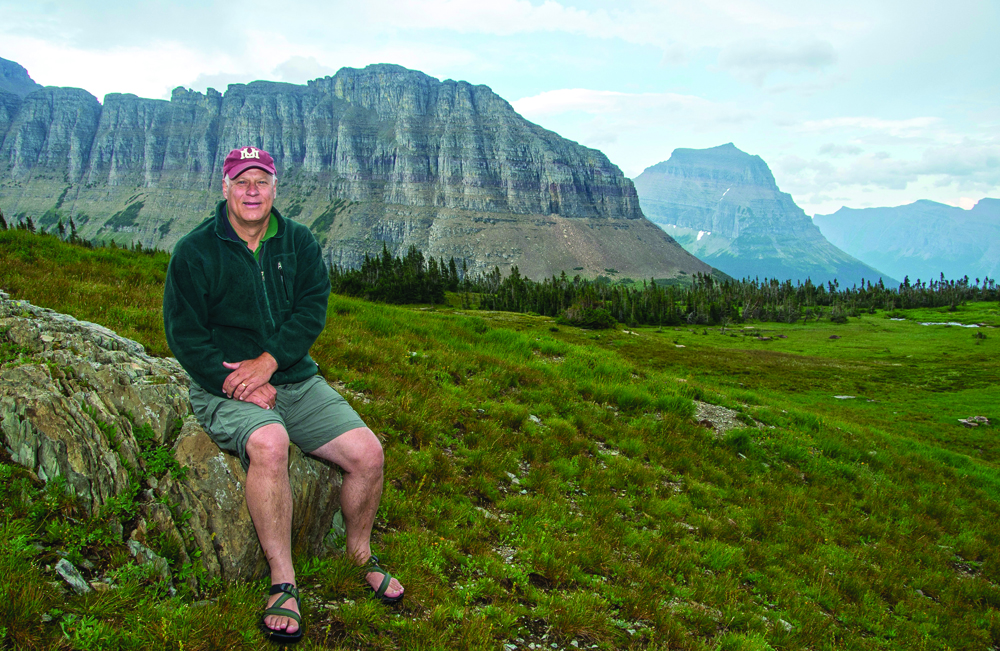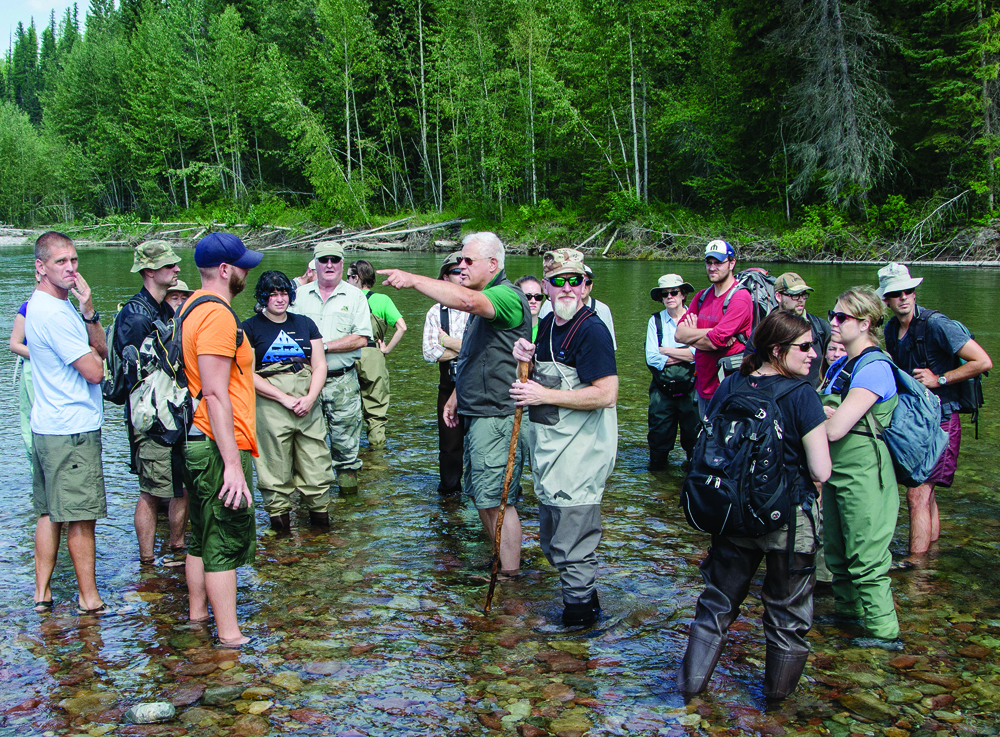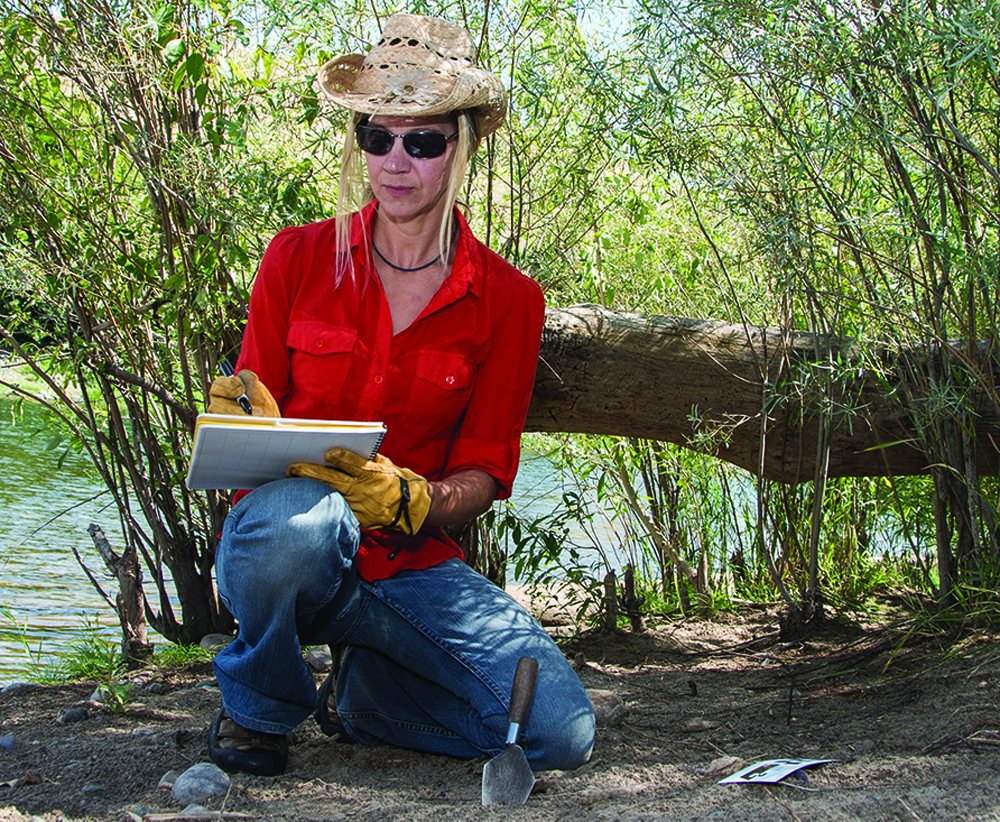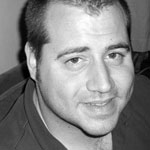Ric Hauer needs coffee.
It’s about 10:30 a.m. on a sunny July morning, and as he approaches the beverage counter at the UC Market, campus is quiet. School is out, most students are gone for break, and the University is reveling in the lazy dog days of summer. It’s shorts and flip-flop weather outside, and most people wandering through the UC are either killing time between summer classes or just looking to relax in the air conditioning.
Hauer is not one of those people.
If his order of a quad-shot espresso seems a little intense for a morning like this, he has his reasons.
It’s been about a month since the paperwork was completed on Hauer’s new five-year, $45 million cooperative agreement with the U.S. Army Corps of Engineers. It’s the largest research award in UM history, and after spending the last year immersed in the planning stages, Hauer is waiting for the first of what he hopes are many task orders from the Corps to land in his inbox.
Once it does, things will get hectic for the affable, longtime professor of ecology who directs UM’s Institute on Ecosystems.
“My world was already way too busy,” he chuckles, sliding into a nearby booth, coffee and smartphone at the ready. “This is a very exciting time. I feel like I’ve spent most of my career preparing myself for this moment.”
Unprecedented in its sheer size, the agreement could add about $10 million annually to the research budget of the University, Hauer says. It could elevate the school’s research enterprise in a bevy of involved disciplines, increasing faculty productivity, and bolstering its capacity for graduate and undergraduate research.
For an institution like UM, that could be a game-changer. That is, if everything goes according to plan.
Hauer is quick to point out that landing a “cooperative agreement” isn’t exactly the same as winning a grant. The Corps doesn’t just cut the University a $45 million check and tell its researchers to go do good work. Instead, the money will be doled out in smaller chunks throughout the life of the agreement and will go toward specific projects ordered by the federal agency. Hauer likens the Corps to UM’s “client” and says how the University performs on the first few projects will be vital to ensuring the rest goes off as scheduled.
“We don’t print the money ourselves,” he says. “If this is not done well, we’ll get one or two contracts, the [Corps] will go, ‘They’re not getting it done,’ and we won’t get any more. It will die on the vine with maybe a few million dollars in a project that went belly-up.”
Hauer thinks about that possibility for a fraction of a second and then shakes his head.
“That ain’t happening,” he says.
Hauer jokes that he was in his classroom when he got the offer that might add an exclamation point to his academic career.
By “classroom,” he means the headwaters of Logan Creek in Glacier National Park, where last summer he was teaching a course on stream ecology and associated wetlands to a small group from the Army Corps of Engineers.
Hauer’s association with the Corps goes back to the early 1990s, when the agency put together a committee of scientists from around the country to help assess its policies and create new protocols for wetland management. Since then, he’s worked on a number of cooperative agreements with the Corps, written some of its regional guidebooks, and taught field classes organized through the agency’s learning center in Huntsville, Ala.
On this August night—a “knockout, beautiful evening,” Hauer remembers—the class was on its dinner break, sitting on rocks around the springhead of Logan Creek, when he was approached by one of his students.
“He said, ‘It was for this moment that I came to the class,’” Hauer remembers. “And I said, ‘Well, of course, look at how beautiful this is.’ And he says, ‘Yeah, this is beautiful, but the reason I took this class is to be able to come and talk to you right now.’ And I went, ‘Uh, OK. Talk away.’”
The student was Lucas Walsh, a program officer at the Corps’ district office in Omaha, Neb. Walsh was looking for a researcher to take part in a new cooperative agreement and thought Hauer might be interested. That was enough to intrigue the professor, whose previous awards from the Corps had been in the $700,000 to $1 million range.
Walsh said this one would be bigger.
“I thought, ‘Well gee, this could be as much as $4 million,’” Hauer says. Then Walsh told him the dollar amount—$45 million.
“I nearly fell off the rock.”
A “Request for Qualifications” appeared in the 2014 Federal Register, and Walsh invited Hauer and UM to apply. They did, and a little less than a year after the chat at Logan Pass and a nationwide search, UM was awarded the project.
“For this particular opportunity, Ric was the ideal candidate,” says Scott Whittenburg, UM’s vice president for research and creative scholarship, “both because of his experience with the Corps and his work in the area of ecology and ecosystems. I think that combination made the University the perfect fit.”
If successful, the cooperative agreement will be the culmination of Hauer’s twenty-three-year relationship with the Army Corps of Engineers. Faculty members say it’s also an acknowledgement that UM already is a national leader in ecology and conservation biology. Work done by professors and students here rivals the best universities in the country, they say, and this new influx of funding will only further that reputation.
“UM was awarded this because of our leadership in research and education on ecological restoration, as well as other priority research areas within the agreement,” says Cara Nelson, director of UM’s restoration ecology curriculum. “We received it because we already have that prestige. However, with these additional resources, we are going to be able to increase our contribution substantially.”
Trouble is, as Hauer sits in the UC on this summer morning, he doesn’t yet know exactly when the first project will begin, what it will be, or where it will happen. That means he has to be ready for anything. During the past year, he’s worked with University administrators to lay the groundwork, creating a network of ten associate directors—including Nelson—and has reached out to his counterparts at Montana State University and others around the state.
He hopes he’s organized an infrastructure that will allow the team to respond quickly and impressively to whatever happens next. It will be a little like doing an intricate, interdisciplinary dance, he says, and to ensure the school’s relationship with the Corps is as long and fruitful as the size of the new agreement portends, Hauer is hustling to make sure UM can not only shoulder the workload, but look good doing it.
“There’s nothing worse than watching somebody doing the waltz that is absolutely rigid,” he says. “They’re hitting all the right steps on the right beat, but it just doesn’t look good because they really don’t know what they’re doing. The idea is to get to the point where the dance is so good that not only are you doing the right steps but you actually look like Fred Astaire and Ginger Rogers.”
Since the Clean Water Act of 1972, the Corps of Engineers has been in charge of maintaining and designating America’s wetlands, as well as having run of its navigable waters. The Corps also frequently partners with other federal agencies, which means its work can take place anywhere those entities may go, all over the world.
During the past two decades, Hauer says the Corps’ mission has necessarily changed, moving toward more preservation, restoration, and caring for the natural and cultural resources on the lands and waters it oversees.
“I believe that the Corps of Engineers, among all the different agencies, is one of the premier agencies specifically addressing environmental issues,” he says. “I’ve seen with them—over twenty-plus years—a cultural shift where they’ve gone from dam building and engineering and this ‘We’re going to conquer’ view to [saying] ‘Wow, we’ve got some really serious environmental problems we’ve got to start addressing.’ So their view and their approach has changed.”
Because of that new focus, the Corps’ partnerships with academics and scientists have become even more important. One of the areas where UM faculty expects to advise the agency on upcoming projects will be compliance with federal regulations—an area near and dear to the hearts of many environmental researchers.
“When you’re making decisions on federal land, there are environmental and cultural resource laws that you have to comply with,” says Kelly Dixon, UM professor in archeology and anthropology and another of the project’s associate directors. “We will be able to help them comply with all of those laws because we have this interdisciplinary infrastructure here on our team.”
Now that the agreement is final, Hauer intends to share the wealth.
Because UM already has a stellar reputation in ecology, he sees no need to build a new brick-and-mortar structure, start a new center, and hold a ribbon-cutting ceremony in order to meet the Corps’ needs. Instead, he’ll opt for more of a cooperative, interdisciplinary strategy with the people and institutions that already exist on campus.
Hauer admits that the plan is a little unorthodox, but then again, there’s nothing ordinary about the sheer size and scope of the project itself.
“It’s a highly, highly unusual approach,” he says, “but a $45 million award like this, with a distributed research portfolio? I’ve actually never heard of it before.”
His team of associate directors includes specialists in freshwaters, invasive species, archeology/anthropology, ecological restoration, wildlife biology, social ecological systems, law, rural health, and recreation ecology, among others. As project orders come in from the Corps, Hauer will steer them to the associate directors and other UM faculty with expertise in those specific areas, bolstering their existing labs with funding. Partnerships with local businesses might also be in the offing, Whittenburg says, and Hauer will work with outside researchers around the state and nation as needed.
“I appreciate Ric’s perspective on that,” says Libby Metcalf, an associate professor in recreational ecology and another of the associate directors. “This doesn’t just affect the ten of us—this affects the entire network of people that we have at UM. Hopefully, my colleagues will benefit from this, the people I work closely with. I think it’s going to provide a lot of opportunities.”
If it works, it could usher in a boom time for the research enterprise at UM. If it doesn’t? Well, Hauer’s thought a lot about that.
“The bust will kill you,” he says. “The boom can kill you, too, but the bust will really kill you. The boom can result in sociological problems but the bust destroys careers and wrecks lives. We don’t want either one of those problems.”
For now, he waits. Once the work begins, there will be little time for reflection. He and his team will be in the thick of it. Corps projects could take them anywhere, doing nearly any type of environmental research.
Until then, Hauer remains caffeinated, and hopes across campus remain high.
“For lack of a better way of putting it,” Dixon says, “I think we can make the world a better place.”








